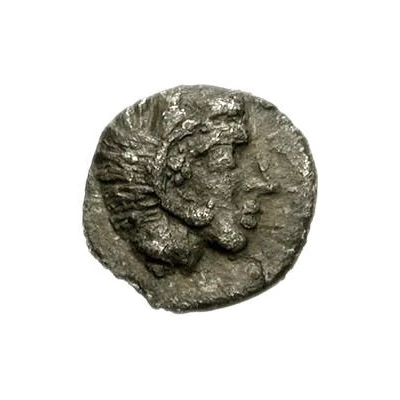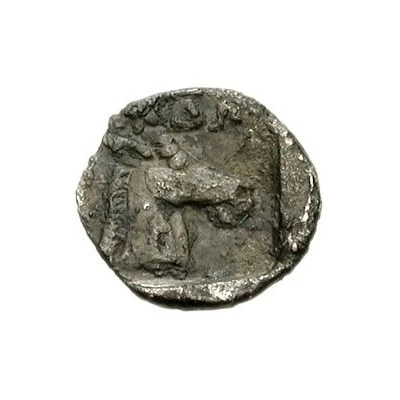


© Classical Numismatic Group, Inc.
Hemiobol Gorgippia 400 BC - 350 BC
| Silver | 0.27 g | 8 mm |
| Issuer | Sindi (Skythia) |
|---|---|
| Type | Standard circulation coin |
| Years | 400 BC - 350 BC |
| Value | Hemiobol (1⁄12) |
| Composition | Silver |
| Weight | 0.27 g |
| Diameter | 8 mm |
| Shape | Round (irregular) |
| Technique | Hammered, Incuse |
| Orientation | Variable alignment ↺ |
| Demonetized | Yes |
| Updated | 2024-10-10 |
| Numista | N#357672 |
|---|---|
| Rarity index | 100% |
Reverse
Head of horse to right within shallow incuse square.
Script: Greek
Lettering: ΣΙΝΔΩΝ
Unabridged legend: Σινδοι
Translation: Sindi
Comment
Anokhin (1986) #52.Mass varies: 0.16–0.46 g;
Diameter varies: 5–8 mm;
Largely a Scythian people, gradually became Hellenized by constant contact with Greeks in the Black Sea, finally annexed/conquered by the Bosporan Kingdom around 380bc.
Interesting fact
The Hemiobol coin was used as a form of currency in the ancient Greek city of Sindi, which was located in the region of Skythia (modern-day Ukraine). Despite its small weight of 0.27 grams, the coin was valued at a high rate, with one Hemiobol being equivalent to half a sheep or a bushel of grain. This shows that even small objects can hold significant value and play an important role in the economy of a society.